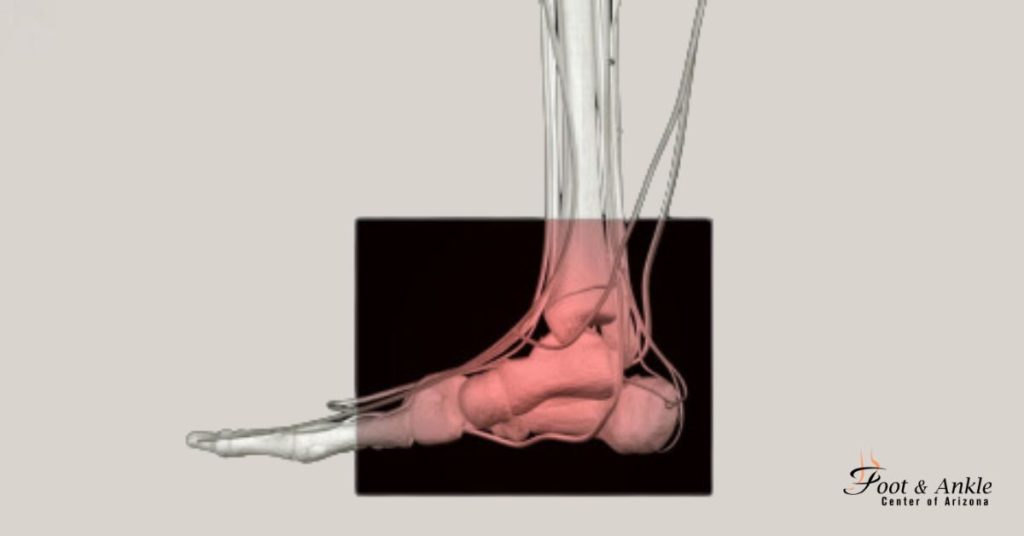Are you suffering from heel pain? We all know how it can be devastating to your daily life. When suffering from excruciating pain in the heel, there are some things you can do at home, but if severe enough, you may need to consider other treatment options from your heel pain doctor in Scottsdale.
Of course, your podiatrist will create a treatment plan tailored to you and your injury, which all depends on your symptoms and the severity of your pain.

What are Common Heel Injuries?
The most common heel injury we see in the office is plantar fasciitis.
When the ligament that stretches from your heel bone to the top of the foot (known as the plantar fascia) becomes irritated, it is known as plantar fasciitis and is usually caused when the tissue is being stretched too far.
Often times, you will experience pain in the morning or after long periods of rest. Aside from pain, another symptom includes a stabbing sensation in the heel. If this pain worsens over time, you will need to see a podiatrist for treatment.
This is caused by repetitive stress and irritation on the plantar fascia, like stretching improperly, playing sports, or wearing high heels.
Achilles tendinitis is also another very common heel injury. This can range from minor to severe and occurs when the Achilles tendon is ruptured, which causes it to inflame and sometimes even degenerate. Symptoms of Achilles tendonitis are inflammation, a painful sensation, a burning sensation, and tenderness.
This injury is usually caused by stress, overuse, and lack of stretching before activity.
What are my Treatment Options?
When at home, be sure to get plenty of rest, apply ice, elevate, and do proper stretches. You may also need special orthotics and physical therapy.
If your heel injury is severe, you may require other non-surgical treatment options or even surgery.
Stem cell therapy is one of the most popular options in terms of non-surgical treatments. It is a simple procedure that requires less recovery time than traditional surgery. The treatment produces cartilage, and relieves pain as well as discomfort so you can get back on your feet easily.
Shockwave therapy is another non-surgical treatment. You will see a quicker recovery time than with traditional surgery. With shockwave therapy, there are virtually no risks or side effects. Most patients have reported being pain-free after just 4 weeks of therapy. Each of these treatment sessions takes only 5 to 10 minutes and requires minimal maintenance after each session.
PRP injection is a regenerative medicine treatment that is popular for heel injuries as well. This treatment promotes the natural healing of the tissue. It delivers remarkable results, without having to go through the long recovery of surgery, which will require you to stay off of your feet for months.
There might be a case where surgery is the best option for you to find relief. Always talk to your podiatrist regarding the best treatment option for you.




